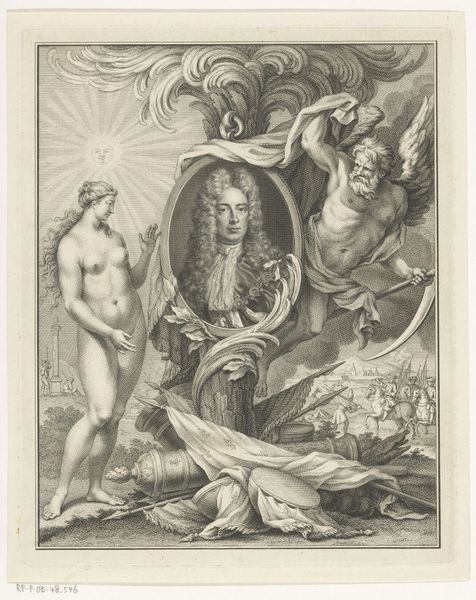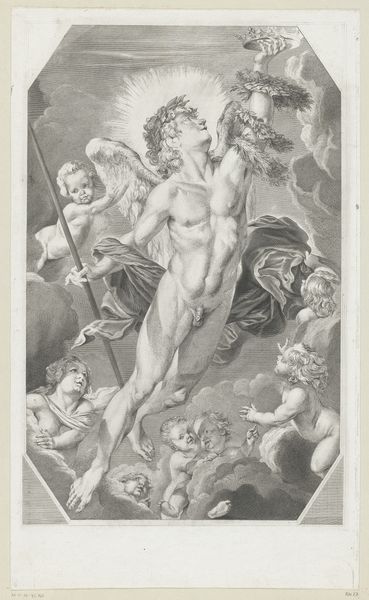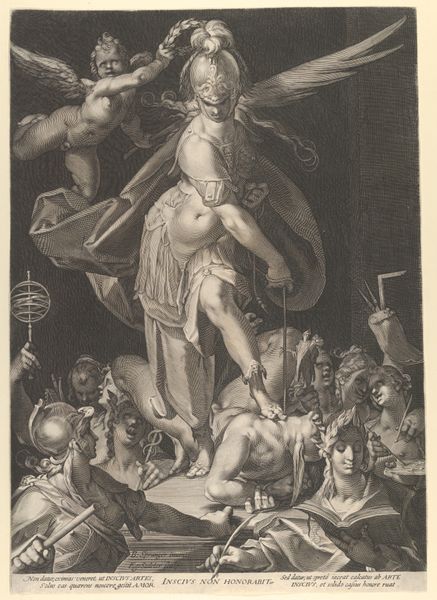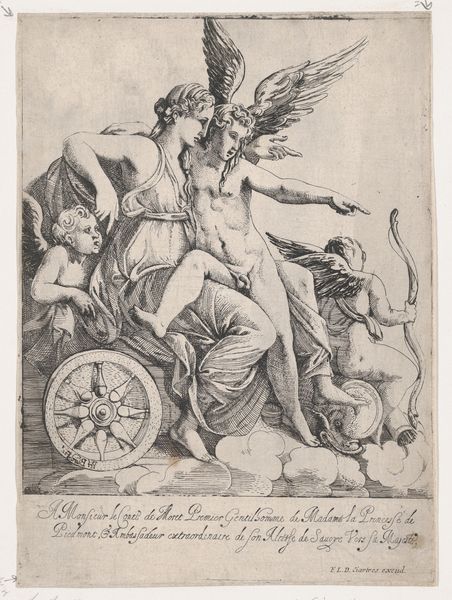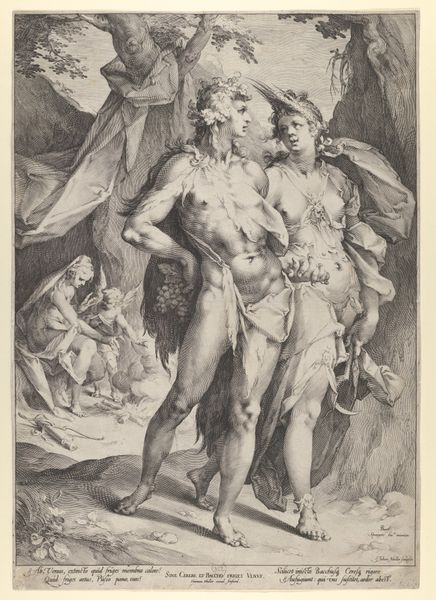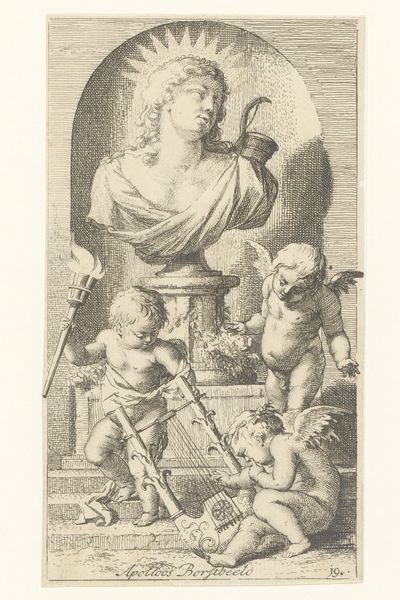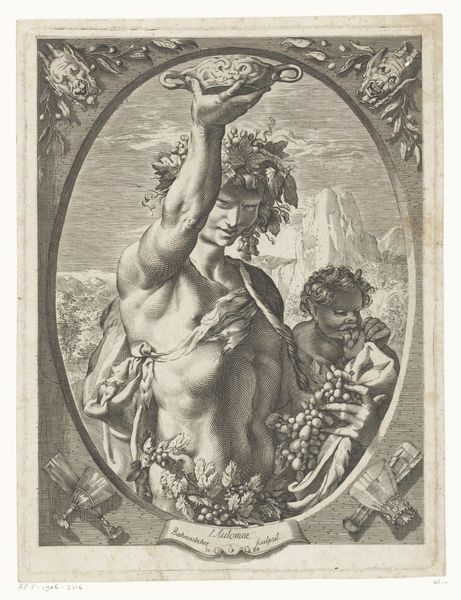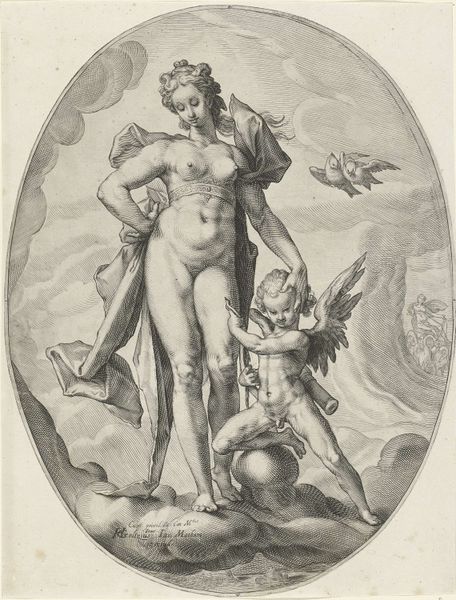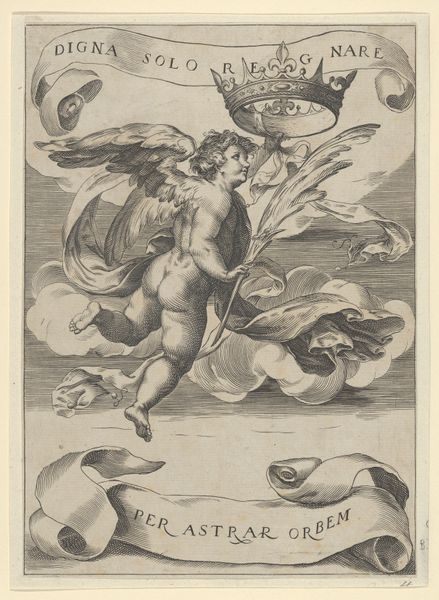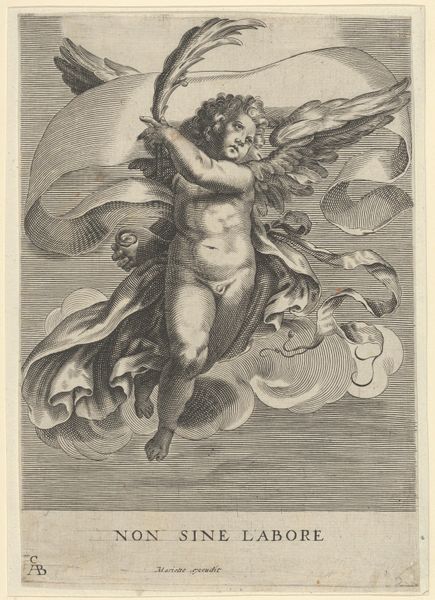
print, engraving
#
allegory
#
baroque
# print
#
figuration
#
history-painting
#
nude
#
engraving
Dimensions: height 226 mm, width 155 mm
Copyright: Rijks Museum: Open Domain
Curator: So, here we have "Allegory on the Power of Women," an engraving dating somewhere between 1565 and 1639, by Pieter Perret. Editor: Right, it’s an engraving depicting a central female figure surrounded by symbols of power and fertility. The composition feels very formal, almost staged. What do you see in this piece, especially considering the historical context? Curator: This image immediately provokes questions about gender and power dynamics during that time. We see a nude female figure dominating the composition. It begs us to consider, whose gaze is this constructed for? How does it play into or subvert existing patriarchal structures? It also makes me think about whether this is meant as an empowering image, or whether it simply uses the female form to signify abstract ideas without granting actual agency to women. What's your take? Editor: It’s interesting that you bring up the gaze. I guess my first reading of it was… celebratory? But when you position it in the context of power and patriarchal structures, I start questioning my own interpretation. Were there feminist readings of allegory at the time, or are we layering that perspective onto the piece? Curator: That’s precisely where art history meets contemporary theory. While "feminist readings" as we understand them today might not have existed explicitly, the anxieties surrounding female power and the challenges to male dominance certainly did. Consider the prevalence of images depicting powerful, sometimes monstrous, women during this era – Salome, Judith, and so on. How does this "Allegory" either align with or challenge these existing narratives about powerful women and gendered norms? Editor: It’s helpful to think about the context of other representations of women. So, looking at this as part of a larger conversation about the construction of gender rather than as an isolated statement. Curator: Precisely. Art doesn't exist in a vacuum. Understanding its relationship to the social, political, and intellectual currents of the time is crucial to a deeper reading. Editor: This really shifted my perspective. I initially saw it as just a historical artwork but I see that looking through a different theoretical lens like feminism or gender studies changes that quite drastically. Curator: Exactly. Engaging with art is about continuous dialogue and re-evaluation through different lenses, and a willingness to unpack its meaning, social and political ramifications.
Comments
No comments
Be the first to comment and join the conversation on the ultimate creative platform.
